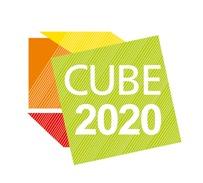CUBE 2020: Addressing the energy transition for non-residential buildings
IFPEB - Institut Français pour la Performance du Bâtiment
Responsable communication et relations presse

CUBE 2020 – A contest for generating energy and CO2 savings
Large companies are looking to equip themselves with a bottom-up approach to foster environmental performance in buildings to complement the top-down policies available in their significant portfolios (certifications, ISO 50001, facility management progress plans, etc.). Having noticed this market need, a contest – CUBE 2020, was created in 2013 by the French Institute for Building Efficiency (IFPEB), alongside global companies, asset managers and public authorities. Since then, many large organisations have used CUBE 2020 as a tool to create internal momentum towards this coveted efficiency.
CUBE 2020 is an energy and CO2 saving contest that provides a framework for non-residential buildings to reduce on average 10 to 25% (12% as a standard average) of energy consumption per year. The principle of the contest, open to all non-residential buildings (educational, office, semi-industrial, retail, health care, state and local government buildings, etc.), is a one-year competition to reduce energy consumption and CO2 emissions by adopting the user’s best practices and fine-tuning the technical installations through low-investment measures.
Participants access a package of resources containing available tips and techniques, communication and mobilisation tools, and are able to track their progress on a monthly basis. Energy savings and CO2 reductions are scientifically measured by comparing the candidates’ building consumption during the contest to a forecast of their historical baseline of consumption[1].
Concrete, quick and measurable results
CUBE 2020 has achieved significant results in the past four editions, in terms of CO2 and kilowatt hours saved, but also in terms of organisations’ empowerment through awareness of sustainable practices. The average percentage of energy savings for the 670 buildings that participated in the challenge is calculated to be around 12% (per year, per building), with some reaching over 30%, and the best at 38.5% when fully audited. More than 320,000 employees have participated, in over 5.3 million square metres and for a total of 85 million kilowatt hours saved!
The strength of the contest lies in its short-term timing, the concrete measurement of savings, the interactive attainable challenge aspect, and the internal reputation at stake for building managers when various buildings from the same company are involved and are implementing changes.
The contest is about getting “a foot in the door”, a short-term practical step towards a long-term strategy. Sociological studies on the participants following the end of the competition show that more than 87% of them continue engaging in actions towards energy efficiency, either by continuing improvements and/or planning larger investments.
International potential: Building policy upon practice
The significant results obtained from Cube 2020 have led to the contest being used as the first of a three-part strategy to create sector specific legislation for existing non-residential building stock in places where it is absent. The contest acts as the proof of concept necessary to:
- Demonstrate feasibility and results to the market (670 buildings in France), which in turn helps garner voluntary engagement among private and public players (as was the case in France, where a National Charter was drafted involving 120 million square metres to date).
- Setting the ground for the adoption of a regional or national law, for example to reduce energy consumption in the existing building stock by 40% by 2030, in line with international commitments.
- Ultimately, this contest grants the possibility to build policy upon practice, essential for any effective long-term policy.
We are looking to transpose this three-step model abroad, in order to boost the building sector’s ability to move towards energy efficiency and sobriety all around the world.
Transposing Cube abroad through international collaboration
If CUBE were transposed to all non-residential buildings in Europe, China and the US alone, we would achieve a yearly reduction of 750 million[2] tonnes of CO2 in the next 10 years, coming close to the 2030 goals for Europe and the world.
Given the CO2 emissions of the existing worldwide building stock, a project with such significant measured and proven results has the potential to be scaled up in other countries.
The CUBE model can be easily reproduced in other countries and has been conceived for that purpose. Once implemented in a new country with a local partner, the project has its own country-related business and partnership model that can be tailored to the partner’s capacity.
The CUBE team provides support through its website and the Candidate Space so that contestants may enter and receive updates on their consumption, resources, and access to other interactive features live from their screens. This resource, key to Cube 2020’s success, allows us to form swift partnerships and guarantees a turn-key project, ready to be implemented abroad.
The energy consumer-interaction at the heart of CUBE can benefit a variety of stakeholders across countries, including large companies, SMEs, national government, local governments, and others, and support the attainment of ambitious climate and energy goals.
Learn more about CUBE 2020 !
Pre-registrations for the next session are available at [email protected]
Amanda Garcia, Project manager, Sustainable cities and buildings, has a background in Political Science from The New School and a master's in Urban Policy & Governance from Science Po Paris' Ecole Urbaine. Amanda recently joined the French Institute for Building Performance (IFPEB) to work on exporting efficiency measures and initiatives abroad.
[1] IPMVP International Protocol for Measurement and Verification of Performance.
[2] Conservative figure based on a 10% saving on the non-housing stock of the three countries (85 billion sqm for 36% of national carbon emissions, 1/3 by non-housing.)



